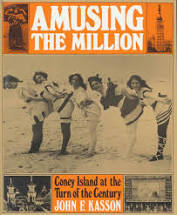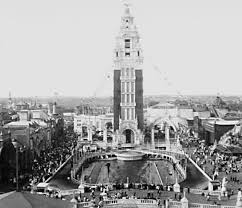Every book mentioned here is interesting. If it wasn’t worth it, I wouldn’t say anything about it – so “briefly noted” seems appropriate. More to the point, I find there to be so much interesting in reading and I’m especially thankful for libraries and librarians. They keep us all in good books. Visit one today and say hi to a librarian. I am so grateful for them and their recommendations.
The Subtle Art of Not Giving a F*CK, by Mark Manson, is a short, snappy action-oriented book of basic philosophy and self-help. Drawing from common sense, the skeptics, and some thoughtful observations of human nature, Manson does, in fact, care quite a bit (regardless of the swearing). He urges readers to think hard about our values and live our lives according to them. Values are not wealth, popularity or external signs; they come from within. Moving beyond all the hype and posturing (Mason has a big online presence), this is a book of hope and optimism.
Jillian Lauren’s Some Girls: My Life in a Harem is neither titillating nor sexy, but it is very interesting. It is a memoir of discovery and exploitation. Lauren, briefly an NYU student from New Jersey, grew up in an abusive household. She doesn’t dwell on how toxic it was, but looking from the outside, it truly must have been awful. How does a smart ambitious young woman cope and/or deal with her demons? She started dancing/stripping as a teenager, moved into escort work, and took advantage of an opportunity to be a paid “guest” in a large group of women for royalty in Brunei. At that time, beautiful young women (actresses, dancers, models from around the world) were offered substantial money to live and attend “parties” with royalty. Chosen party-goers had the opportunity to sleep with royalty, and favored guests would stay for months on end, receiving expensive gifts. It was a most extraordinary experience, creepy as all get out, yet somehow normalized for those that found themselves within it. Lauren is extremely smart, too smart to be a victim or to not be aware of where she is and what was transpiring. Journaling through her time was a way to cope. It took two exits before Lauren re-arranged her life, all while in her early 20s, and returned to the US with lots of money. Judgments are easy; understanding is difficult. The book is about discovery, power, gender and sex. It is worth consideration particularly in the name of understanding.
Thanks to a friend I joined the “Free Britney” movement, wondering why this extraordinary talented and successful women was under the control of the state and her family. She struck me as immensely capable. Why wasn’t she allowed to make her own decisions? Reading Britney Spears’ memoir, The Woman in Me, the reasons for her exploitation became more clear. Above and beyond her amazing talent, Spears is (or now “was”) an extremely generous and trusting soul. Baked into her love of singing, dancing and entertaining is a desire to please. While exploitation of talent is baked into the communication industry, in Spears situation, the actions of her parents and sister were horrific. They used and manipulated her. With Spears’ children as her priority, she worked through many years of extraordinarily unjust external control, eventually retaking personal agency. She is a genuinely nice person who justifiably has rage. Yet she is not about anger or vengeance. It’s difficult to finish the book and not be a bigger fan of Britney is every sense of the world – mixed with outrage at what happened to her.
One of the scariest zombie horror novels I have ever read, Colson Whitehead’s Zone One is truly terrifying. Whitehead is a brilliant author who regularly explores different genres. In this 2011 best-seller, the post-apocalypse world is ravaged by zombies hungry for uninfected humans. Our hero, ironically named “Mark Spitz,” is a “sweeper,” charged with cleaning up what survivors hope are straggling zombies. It is brutal and violent work, yet the story unfolds with care and tenderness as the non-infected remember life before the contagion and try to make sense of their current situation. Whitehead stated that Asimov and King inspired the work. While one can see how Zone One might be read as genre fiction, Whitehead’s attention to detail, his beautiful prose, sets the book apart. Some sections I read aloud – they were that good. It is a haunting book, too, and I am grateful I did not encounter it during the Covid pandemic. Whitehead gets more than a few things right in his imaginative creation of a postlapsarian America. Frightening indeed!
Art Monsters: Unruly Bodies in Feminist Art is a very interesting work of cultural criticism. Penned by Lauren Elkin, the book reads at times like one recursive narrative and at others like a series of reflections, a critic’s journal. The book emerged through the pandemic and Elkin’s pregnancy. Both, I think, shaped her thinking about herself, women, and the ways that art empowers, problematizes, constricts and reshapes ontological questions. What and who is, or is not, monstrous. Elkin is breathtakingly smart, and her prose threads seemingly disparate observations and references into something special. The book, though, is neither linear nor easily summarized. Rather, it creates an atmosphere, an ether through which cultural production and objects reveal themselves differently. Yes, I am still working to make sense of this very intriguing book and author.
Shahnaz Habib is a gifted writer, a raconteur and keen observer. In Airplane Mode: An Irreverent History of Travel, she displays her discursive talents. Chock full of references, the book is less a history than a selection of explorations. It is entertaining and diverting. I wish more of it would stick, but what remains most vivid is her prose and her perspective. It is a most personal book. Airplane Mode did remind me, from a phenomenological framing, of subject, voice and identity and their power. Sometimes the who, when and how of an account is as important and the account itself.
Under the heading of “Where were they when?” you might want to take a look at I Married Wyatt Earp: The Recollections of Josephine Sarah Marcus Earp. It’s an interesting read, but what makes it more of a puzzle is that it is difficult to determine what is real and what it fiction – on multiple levels. The book’s author, Glenn G. Boyer, purports that the contents were collected and edited by him. On that front, it is a straightforward first person history from Josephine, telling her story from adolescence through decades of marriage to the famous lawman. The gunfight at the OK Corral get attention, to be sure, but it is the balance of their lives together, their trips to Alaska, their never-ending hustling, that give the narrative flavor. While the book was published and republished by the University of Arizona Press, it is not academic, even with notes. Boyer provides his take on some of Josephine’s claims. Historians of the West looked more closely. Many determined that broad parts of the book were fabricated by Boyer. The press eventually distanced itself from the publication. True? False? Like the classic ending of The Man Who Shot Liberty Valance, the west is often much more myth than history. Read it with a grain of salt. Or possibly with a tablespoon and for entertainment’s sake.
Ginger Strand’s Inventing Niagara: Beauty, Power and Lies is a different sort of cultural history. Akin to long form journalism with the writer’s presence throughout, this book tackles a fascinating physical site whose history has been contested for centuries. Strand is intrigued by the recurring making and remaking of Niagara, its problematic value in culture over the years. She is drawn to it, embracing the beauty, power and, at times, crassness of it. Yet she is also angry at the inherent falseness in the area’s many misrepresentations. Add to it the exploitation of nature and many who lived in the area, and the best word to describe Niagara Falls is problematic. Remember, too, that the infamous Love Canal was a byproduct of the industrial production drawn to the site. Strand’s mixed emotions give the book a surprising stickiness but ultimate left this reader wanting greater clarity of focus. That might mean different books, but I see that is fine. The subject is worthy of being viewed from many different perspectives, just like visiting the falls themselves.
Ferdydurke, a comic novel by Witold Gombrowicz, is an absurdist exercise in creative nihilism. It has a plot – a 30 year old is turned into a schoolboy by an evil professor – only in the most generous of terms. One doesn’t read it for the story. Instead, the prose tangles and untangles, jumps and refuses to be tied down. It is a satire on psychedelics. More important than enjoyable, Ferdydurke was banned from its initial publication in Poland in 1937. Everyone found it objectionable. Not that it is obscene or political. Rather, the novel’s deep cynicism, its nihilism, poses threats to logical and traditional ways of thinking. It is radical in its bones. As such, the book represents an important literary step. All that said, it is not something one picks up as a simple read. I found it slow going and I’m confident that I missed the vast majority of references, asides and comic touches.
David Potash












